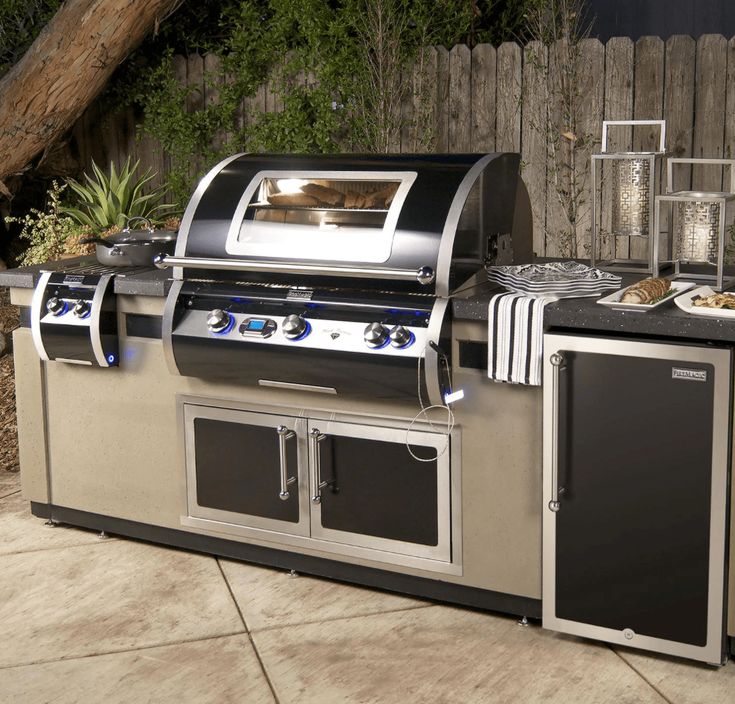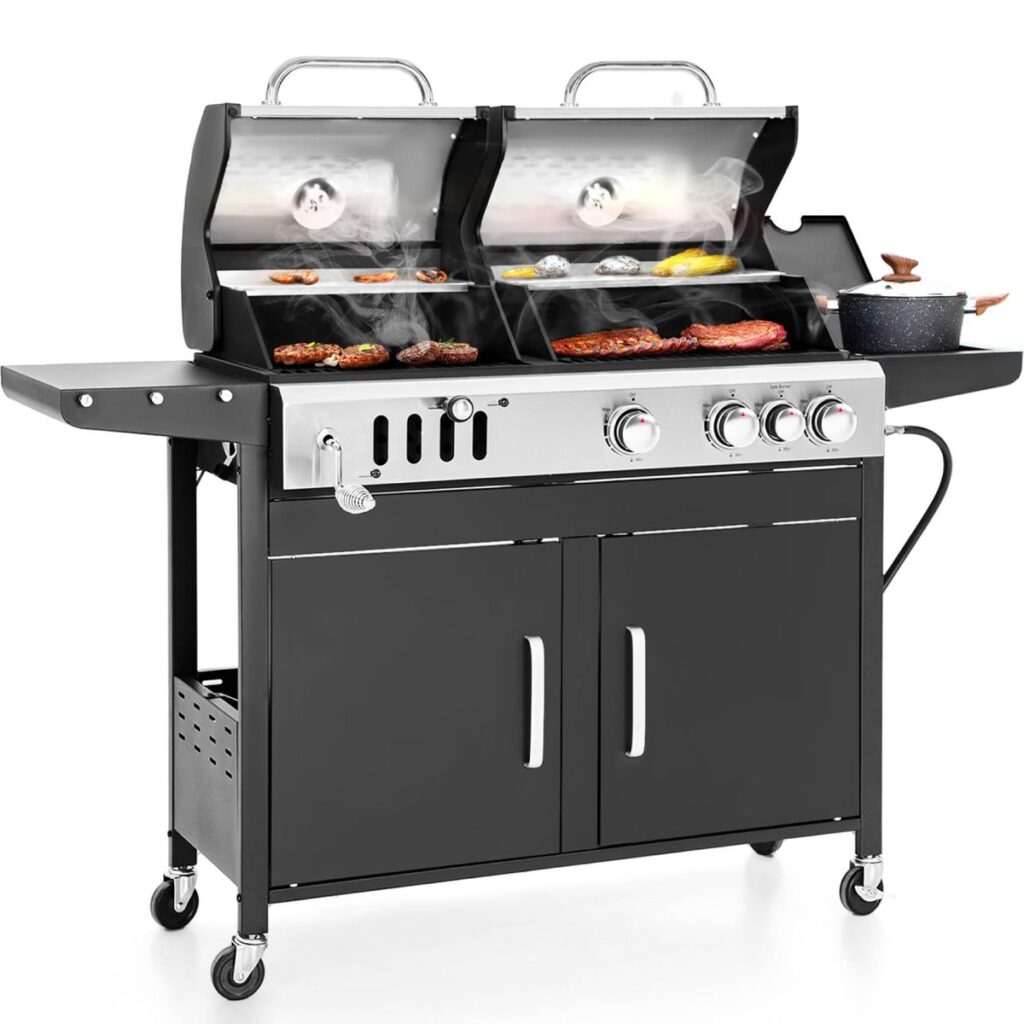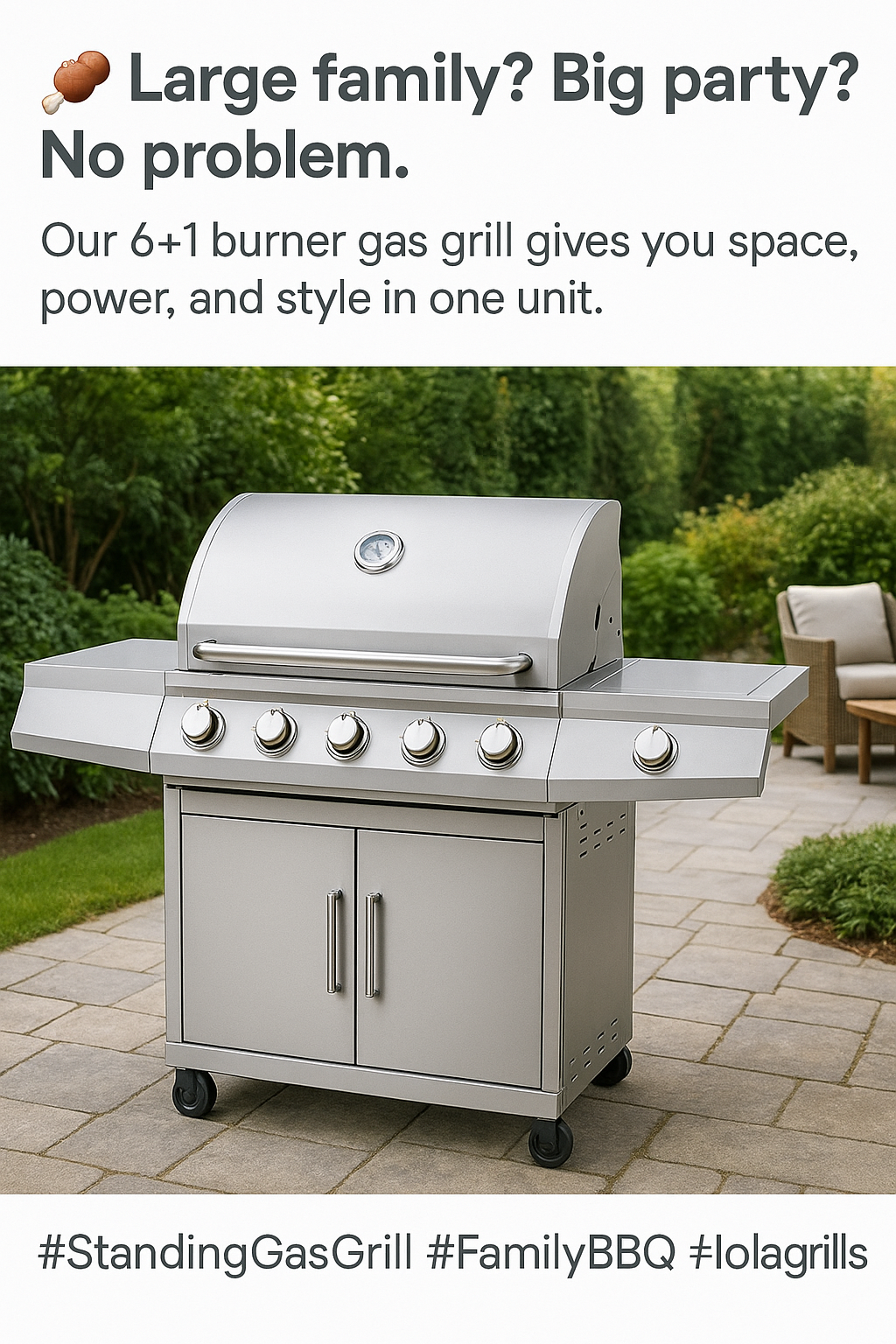
Backyard cooking is a tradition that brings people together. Many families enjoy grilling outdoors, but choosing the right type of grill can be confusing. Infrared grills are marketed as modern and efficient, while gas grills remain the most common choice for households.
Gas grills are often the better option for backyards because they are easier to use, more affordable, and more flexible in cooking styles compared to infrared grills. While infrared grills provide very high heat and fast cooking, gas grills allow more control, lower costs, and safer use for family settings.
When comparing these two options, the decision is not just about technology. It is about your cooking habits, budget, and the types of food you want to prepare. The following sections break down everything you need to know so you can make the right choice.
What makes gas grills popular for backyards?
Gas grills are popular because they are simple to use and meet the needs of most families. People often want fast heating, steady flames, and easy cleanup without needing special skills. Gas grills deliver all of this at a fair price.
Gas grills are popular for backyards because they provide quick ignition, reliable heat, wide cooking space, and affordable prices, making them a convenient choice for family meals and gatherings.
Everyday use
Most gas grills light up with a button or a match and reach cooking temperature in minutes. Families prefer this because it saves time during busy evenings. Unlike charcoal grills, there is no long wait or messy ash cleanup.
Value for money
Gas grills cost less than infrared models and are widely available. Replacement parts like burners or grates are easy to find. For many households, this makes them a smart long-term investment.
Social cooking
A gas grill fits well in family gatherings or parties. It allows people to cook large amounts of food with less stress. For backyard setups, this balance of speed, space, and price makes gas grills a first choice.
| Feature | Gas Grill Advantage |
|---|---|
| Ignition | Quick start, no waiting |
| Cooking space | Large area for family use |
| Price | Affordable and practical |
| Maintenance | Simple cleaning and repair |
How do gas grills compare with infrared grills?
People want to know how these two grill types perform side by side. Infrared is newer, but gas grills dominate the market. The differences matter depending on what you cook.
Gas grills offer more balanced cooking at lower cost, while infrared grills cook hotter and faster. Gas grills are better for everyday meals, and infrared is better for quick steak searing.
Heat levels
Infrared grills can reach over 700°F, while gas grills normally top at around 600°F. For searing steaks, infrared may be better. For chicken, vegetables, or slow cooking, gas grills are safer.
Cooking method
Gas grills use convection. Hot air circulates around the food. This sometimes dries out meat, but it is flexible for many foods. Infrared grills use radiation to heat directly. Food cooks fast and stays juicy but risks burning.
Cost and upkeep
Gas grills are cheaper and easier to repair. Infrared grills cost more and may need special parts. This makes gas grills the safer bet for most backyard buyers.
| Aspect | Gas Grill | Infrared Grill |
|---|---|---|
| Max temperature | 500–600°F | 700–1,200°F |
| Cooking style | Convection (hot air) | Radiation (direct heat) |
| Price | Lower | Higher |
| Best for | Family meals, variety | Steaks, quick cooking |

Are gas grills easier to use for beginners?
First-time grillers often worry about burning food or handling flames. Gas grills are designed to be simple. Infrared requires more skill and timing.
Gas grills are easier for beginners because they allow slower cooking, better control of heat, and fewer risks of overcooking compared to high-heat infrared grills.
Control of heat
Gas grills have knobs for adjusting flames. This helps new users experiment with different recipes without ruining food. Infrared grills heat so fast that mistakes happen quickly.
Safety
Flare-ups can occur in any grill, but gas grills expose beginners to less extreme heat. Infrared burners can feel intimidating for those not used to cooking at high speed.
Learning curve
Beginners who use gas grills can focus on timing and seasoning. Infrared demands quick reactions. For family-friendly setups, gas grills are more forgiving.
Do gas grills offer better temperature control?
Temperature is one of the most important features of a grill. Some foods need high heat, while others need low and slow cooking. Gas grills provide a wide range of control.
Gas grills offer better temperature control because their burners adjust quickly, giving cooks more flexibility for grilling, roasting, or slow cooking compared to infrared grills.
Flexibility
Gas burners can go from high to low heat within seconds. This makes them suitable for different foods, from seared steaks to roasted vegetables.
Zone cooking
Many gas grills have multiple burners. This allows for heat zones. One side can cook at high heat, while the other side stays cooler for delicate items like fish.
Consistency
Gas grills do not reach the extreme highs of infrared, but their steady mid-range heat helps maintain consistency. For home cooks, this makes results more predictable.
| Cooking Style | Gas Grill Benefit |
|---|---|
| Steaks | Enough heat for a good sear |
| Chicken | Controlled cooking, no burning |
| Vegetables | Even heat, less drying out |
| Slow roast | Low flame option works well |
Can gas grills handle low and slow cooking?
One concern people have is whether gas grills can do more than fast grilling. Low and slow cooking is a key part of BBQ culture.
Gas grills can handle low and slow cooking by adjusting burners to lower settings and using indirect heat, making them versatile beyond quick grilling.
Indirect heat method
Most gas grills allow you to turn off one burner and cook food on the opposite side. This simulates smoking and keeps the temperature steady for hours.
Accessories
With add-ons like smoker boxes or wood chips, gas grills can even add smoke flavor. This brings them closer to the taste of traditional BBQ.
Family use
Low and slow cooking is useful for ribs, brisket, or whole chicken. Families can enjoy a variety of meals from one grill without needing specialized equipment.

Are gas grills more affordable than infrared grills?
Price plays a big role in choosing a grill. Families want good value without overspending.
Gas grills are generally more affordable than infrared grills, making them a practical choice for households looking for quality without the higher price tag.
Entry-level prices
You can buy a solid gas grill for a few hundred dollars. Infrared grills often cost two to three times more for similar size.
Long-term costs
Gas grills have simpler parts, which are cheaper to replace. Infrared burners need special materials like ceramic, adding to maintenance costs.
Availability
Gas grills are available in many stores and online. Infrared grills are more specialized and less common. This makes gas grills easier to buy and maintain.
| Factor | Gas Grill Advantage |
|---|---|
| Starting cost | Lower and more options |
| Repair parts | Easier to find, cheaper |
| Total expense | Lower across many years |
Which foods taste better on a gas grill?
Taste is always a big part of grilling. Some argue infrared keeps food juicier. Others say gas grills produce better flavor with add-ons.
Gas grills produce better all-around flavor because they allow the use of wood chips, marinades, and different cooking techniques, while infrared grills mainly focus on fast searing.
Everyday meals
Gas grills handle burgers, chicken, vegetables, and seafood with balanced results. Infrared excels only at searing meat.
Flavor add-ons
Gas grills can use smoker boxes to add wood flavor. They can also support rotisseries and other accessories. Infrared is more limited in this sense.
Family preference
Most families prefer the wider flavor variety of gas grills over the steakhouse-style cooking of infrared.
Conclusion
Gas grills and infrared grills both have strengths. Infrared grills heat fast and cook steaks with precision. But gas grills remain the smarter choice for most backyards. They are more affordable, easier to use, flexible for many foods, and safer for family settings.
For homeowners who want variety, control, and value, gas grills are the answer. They provide everything from weeknight dinners to weekend BBQ parties. If you want a grill that matches everyday needs, a gas grill will give you the balance of performance, price, and reliability.


